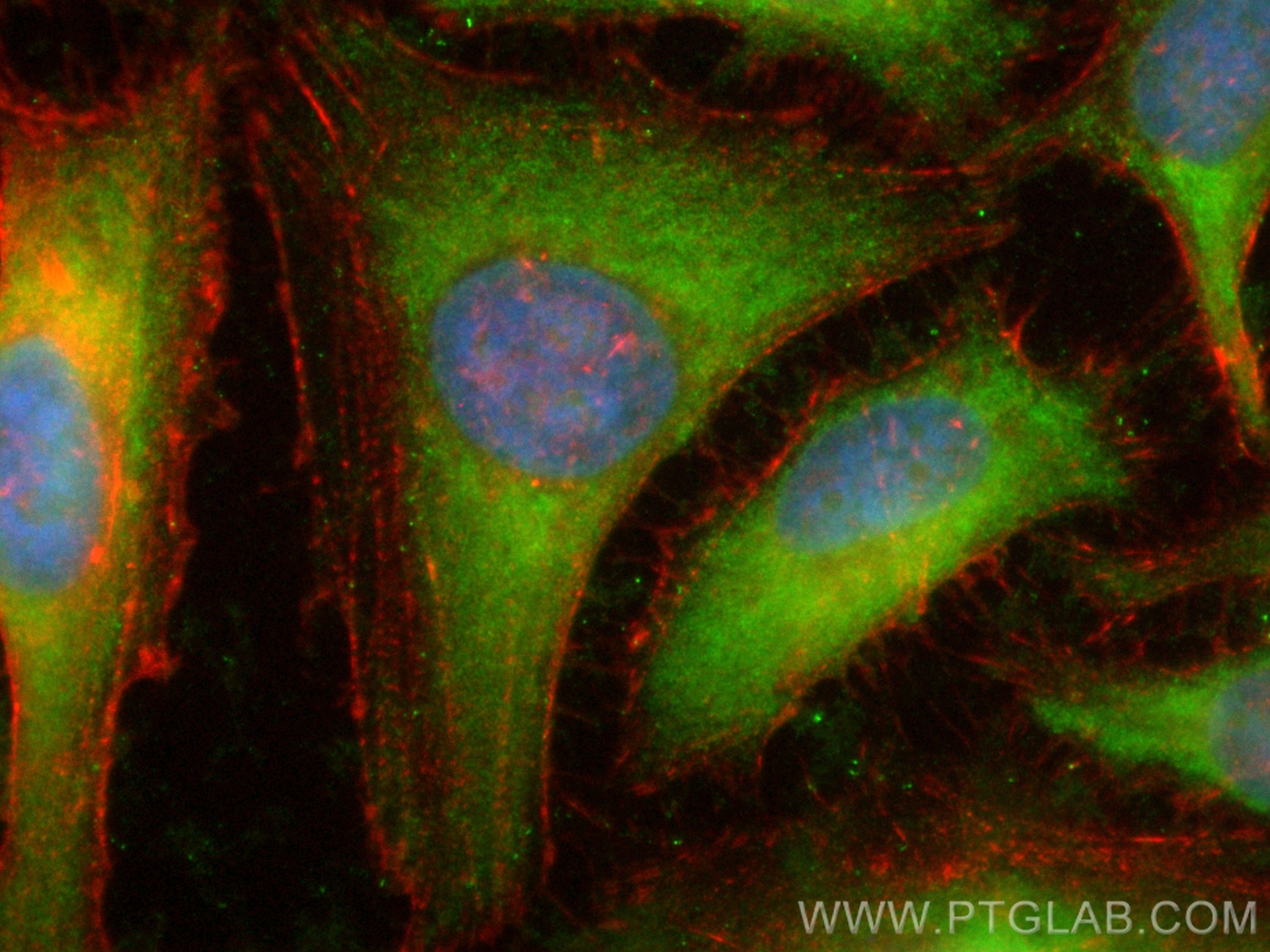Tested Applications
| Positive IF/ICC detected in | HeLa cells |
Recommended dilution
| Application | Dilution |
|---|---|
| Immunofluorescence (IF)/ICC | IF/ICC : 1:50-1:500 |
| It is recommended that this reagent should be titrated in each testing system to obtain optimal results. | |
| Sample-dependent, Check data in validation data gallery. | |
Product Information
CL488-18274 targets ATP6V0D1 in IF/ICC applications and shows reactivity with human, mouse, rat samples.
| Tested Reactivity | human, mouse, rat |
| Host / Isotype | Rabbit / IgG |
| Class | Polyclonal |
| Type | Antibody |
| Immunogen | ATP6V0D1 fusion protein Ag13002 Predict reactive species |
| Full Name | ATPase, H+ transporting, lysosomal 38kDa, V0 subunit d1 |
| Calculated Molecular Weight | 351 aa, 40 kDa |
| Observed Molecular Weight | 37-41 kDa |
| GenBank Accession Number | BC008861 |
| Gene Symbol | ATP6V0D1 |
| Gene ID (NCBI) | 9114 |
| RRID | AB_3672693 |
| Conjugate | CoraLite® Plus 488 Fluorescent Dye |
| Excitation/Emission Maxima Wavelengths | 493 nm / 522 nm |
| Form | Liquid |
| Purification Method | Antigen affinity purification |
| UNIPROT ID | P61421 |
| Storage Buffer | PBS with 50% glycerol, 0.05% Proclin300, 0.5% BSA, pH 7.3. |
| Storage Conditions | Store at -20°C. Avoid exposure to light. Stable for one year after shipment. Aliquoting is unnecessary for -20oC storage. |
Background Information
ATP6V0D1(V-type proton ATPase subunit d 1) is also named as ATP6D, VPATPD and belongs to the V-ATPase V0D/AC39 subunit family.It is responsible for acidifying a variety of intracellular compartments in eukaryotic cells, thus providing most of the energy required for transport processes in the vacuolar system.
Protocols
| Product Specific Protocols | |
|---|---|
| IF protocol for CL Plus 488 ATP6V0D1 antibody CL488-18274 | Download protocol |
| Standard Protocols | |
|---|---|
| Click here to view our Standard Protocols |



